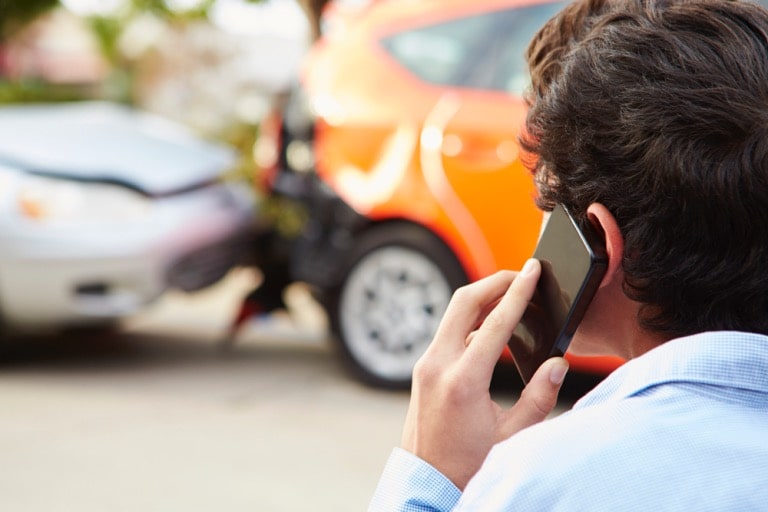Understanding Non-Fault Accidents: What Are They and How Do They Affect You?

Accidents happen, and while we all hope to avoid them, it’s crucial to understand what happens if you’re involved in one that isn’t your fault. In the UK, a non-fault accident is a term you’ll hear often, but what exactly does it mean, and how does it affect you? This guide will break it all down, from defining a non-fault accident to understanding its impact on your insurance and driving record.
What is a Non-Fault Accident?
In simple terms, a non-fault accident is one where you are not to blame for the incident. For example, if another driver runs a red light and crashes into your car, that’s considered a non-fault accident for you. This classification is crucial because it affects how your insurance handles the claim and what kind of compensation you might receive.
Legally, non-fault accidents are those where evidence clearly shows you were not at fault. Insurance companies use this definition to determine whether they’ll cover damages or adjust your premium. It’s essential to understand this distinction to ensure you get the right support and compensation following an accident. For help, contact RTA experts here.
How to Determine if an Accident is Non-Fault
Determining whether an accident is non-fault involves assessing the circumstances and gathering solid evidence. Key factors include witness statements, police reports, and any available dash cam footage. If you have these pieces of evidence clearly indicating that the other party was at fault, your insurer can more easily process your claim as non-fault.
Collecting evidence at the scene is vital. Take photos of the damage, jot down details of the accident, and get contact information from witnesses. This documentation helps establish that you weren’t responsible and supports your case when dealing with insurance companies or legal representatives.
The Impact of Non-Fault Accidents
A non-fault accident can have several impacts on your insurance and finances.
Insurance Premiums: Even though you’re not at fault, a non-fault accident can still affect your insurance premiums. Some insurers may increase your rates as they might see you as a higher risk. However, many insurers have policies to prevent premiums from rising in non-fault cases, so it’s worth discussing your situation with them.
Claims and Compensation: When it comes to claiming compensation, being in a non-fault accident usually means you’re entitled to repair costs and potentially compensation for personal injuries. The amount you receive can vary based on the severity of the accident and the evidence provided.
Driving Records: Your driving record may not be affected negatively by a non-fault accident, but it’s still important to monitor it. Insurers use driving records to assess risk, and frequent incidents, even if not your fault, can influence their decisions.
Steps to Take After a Non-Fault Accident
Knowing what to do immediately after a non-fault accident can streamline the process and help you avoid common pitfalls.
Immediate Actions: Ensure everyone is safe and call emergency services if needed. Exchange details with the other driver and collect witness information. Document the scene with photos and notes to provide a clear account of what happened.
Reporting the Accident: Contact your insurance provider as soon as possible to report the accident. Provide them with all the collected evidence and details. It’s also a good idea to report the incident to the police, especially if there are disputes or if the other driver is uninsured.
Claiming for Damages: File a claim for damages to your vehicle and any personal injuries. Your insurer will guide you through the process, but make sure to keep all records and correspondence for reference.
Professional Help Pays Off
Are you debating whether you should use a professional claims service or not? Most people go back and forth on this option. On the one hand, they see the perks of getting help. On the other hand, they’re worried about the cost and what it can mean for their claim. So, what direction should you go in?
Generally, most people are going to benefit from getting professional help when they’ve been in an accident on the road. Let’s take a look at why.
Takes the Stress Away
First, you’re likely to be worked up and stressed after a car accident. It can be a traumatic event, and the last thing you want is to have to deal with a claim on top of that. This is particularly true if the other driver is confrontational and not accepting the blame for what happened.
This is where professional help comes in. They can take the pressure off your shoulders. They take over the claims process so you have the emotional space to recover from what you’ve been through. They deal with all the complications and have the experience to help them get the best solution on your behalf.
Leads to Better Compensation
Do you want to ensure you get the most money out of the car accident claim? Of course, this is going to help pay for your car and it can be what you deserve if the other driver was reckless and in the wrong. But, it can be difficult for people on their own to get the highest amount of compensation.
In contrast, experts know what a client should be awarded. They use their experience to know what others got in similar cases and use this information to get you more compensation. So, this means that you can get a better pay-out. Not only will you get more compensation, but this can also be in a short amount of time.
Conclusion
Understanding non-fault accidents is essential for any driver. By knowing what they are, how to manage them, and how they impact you, you can better protect yourself and navigate the complexities of insurance claims. Stay informed, gather evidence, and don’t hesitate to seek advice if you find yourself in a non-fault situation.




